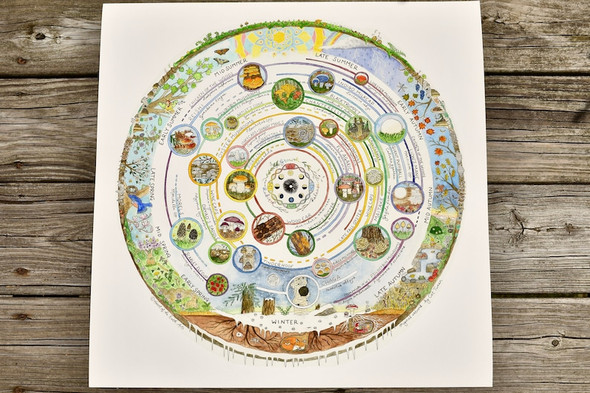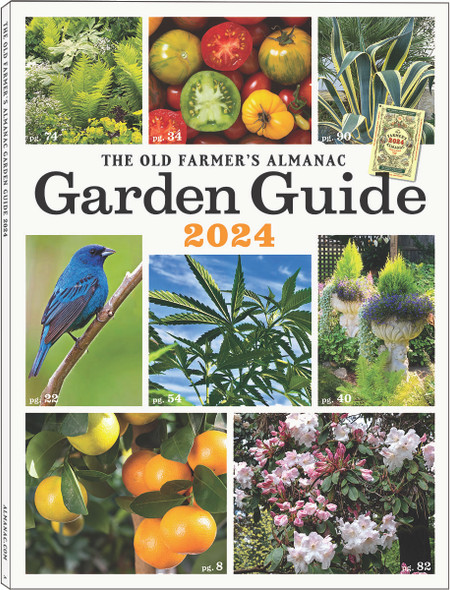Description
Drawn by New England artist Catherine Tween
- Print of an original watercolor painting
- Size: 20 x 20 inches (It's the size of the original painting. All the intricate details are visible.)
- Archival fine art paper
- This print is unframed and will arrive rolled in a tube
- Printed in the Connecticut River valley of western Massachusetts
From the artist:
The Wheel of the Year! A perpetual, cyclical, seasonal calendar for pagans, witches, astrologers, and anyone cultivating deeper intimacy with the cycles of nature and with ancestral ways of life.
This calendar marks the eight seasonal festivals (or "sabbats") of the solar year, which have been celebrated in some form by pagan folk since ancient times. It is syncretic, meaning it's not specific to any one indigenous culture or historical moment, but rather represents a blend or synthesis of influences, primarily Celtic, Norse, Anglo-Saxon, and Germanic in origin. This is the version of the Wheel of the Year most widely accepted by Neo-pagans, Wiccans, and practitioners of nature-based spirituality and magic today.
The eight festivals fall on the solstices and equinoxes (the "quarter-days") as well as roughly halfway in between them (the "cross-quarter days"). The precise astronomical timing of the solstices and equinoxes will vary slightly from year to year, hence the range in dates on the perennial calendar. The cross-quarter days may be celebrated at the 1st of the month, at the first full or new moon of the month, or at the astronomical midpoint between the solstice and equinox. I believe there is no right or wrong way; it's up to you!
Inside each spoke of the wheel, I've painted the traditional iconography associated with each sabbat, including plants, animals, foods, decorations, rituals, and activities specific to that festival and time of year. My intention and hope for this painting is that these images serve as inspiration and reminders of ways we might honor and celebrate the turning of the wheel, as our ancestors did.
At the center of the painting is a yin and yang-inspired symbol depicting the duality of day and night, darkness and light. Duality becomes trinity with the Triple Goddess of Maiden, Mother, and Crone, depicted in triangles around the outside of the zodiac wheel. We move from trinity to quaternity with the medicine wheel at the center depicting the four directions and the corresponding four elements. From there we expand into the phases of the moon, the twelve astrological signs of the zodiac, and the eight sabbats.
The start and end dates of the astrological seasons vary slightly year to year, so for this perennial calendar I've chosen the most typical or average dates.
A hidden detail in the painting is that most of the spokes of the wheel are actually the trees of the Ogham tree calendar, a Celtic or Druidic tradition according to which each of the 13 moons of the year corresponds to a particular tree or plant. Beginning after the winter solstice, they are as follows: Birch, Rowan, Ash, Alder, Willow, Hawthorn, Oak, Holly, Hazel, Vine, Ivy, Reed, and Elder.
Many of the pagan festivals shown here are in fact the origins of our modern holidays. Yule has become Christmas; Samhain, Halloween; Ostara, Easter; and so on. We may choose to celebrate the pagan festivals instead of or alongside the modern holidays. Either way, the history is very fascinating! I learned so much in the process of doing research for this painting. However, I am only self-taught, and not a true scholar of this history, so I'm sure I am misinformed about some things. I welcome any questions or corrections on anything that I've written here, or that is present in the painting.
3 Reviews
-
detailed, clear, beautiful artwork on high quality paper
packaged for safe transport, arrived in good time very pleased with quality of product and service
-
So beautiful !
perfect for people who don't follow a day calendar which would be someone like me. Love it :)
-
I Recommend this!
This is a wonderful piece of art, with intricate details. I had it framed with 8 hanger loops so I can turn it as the Wheel turns each year.It looks even better in person than the pictures and the paper is high quality. I look forward to teaching my kid about the Wheel of the year using this illustration.

























